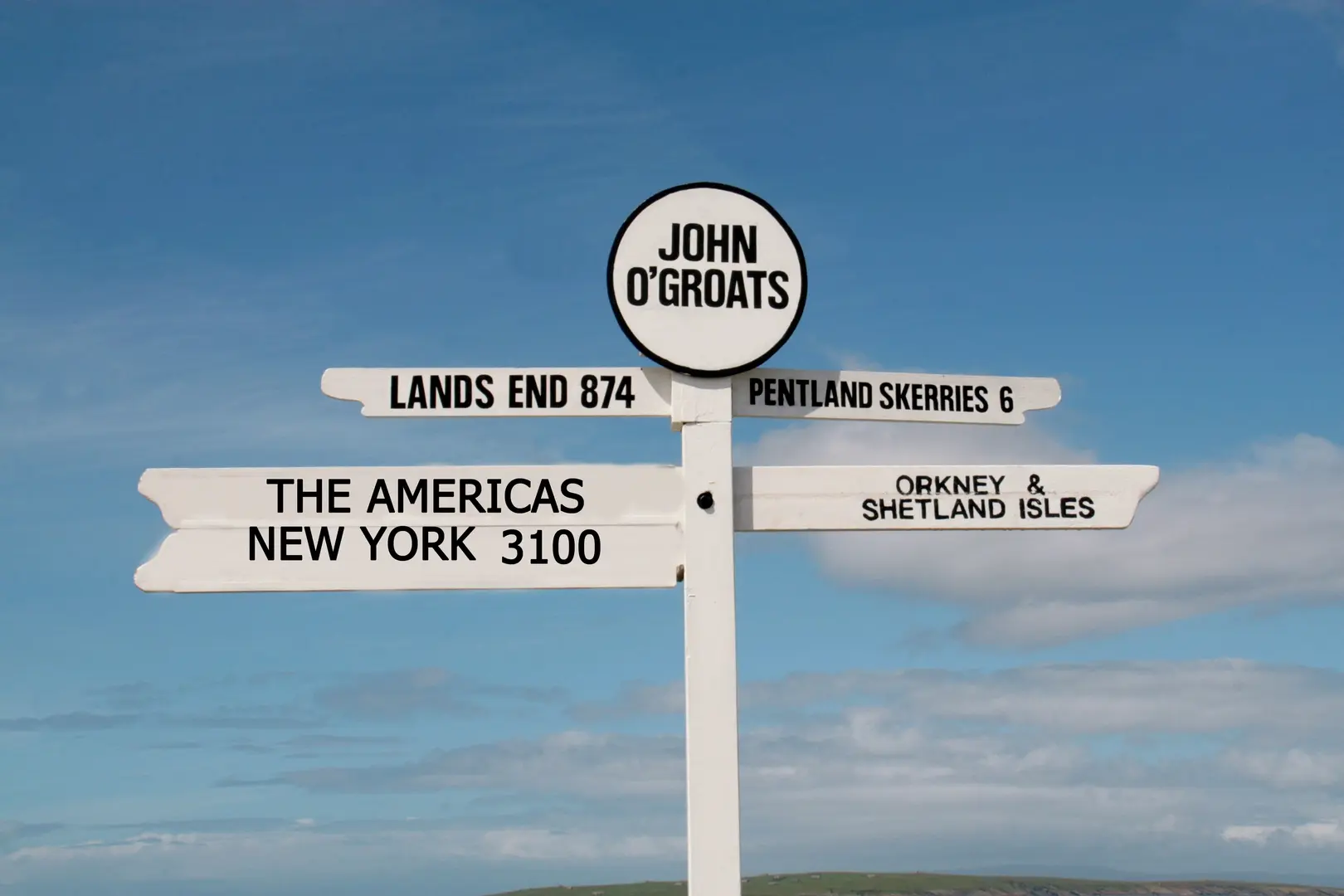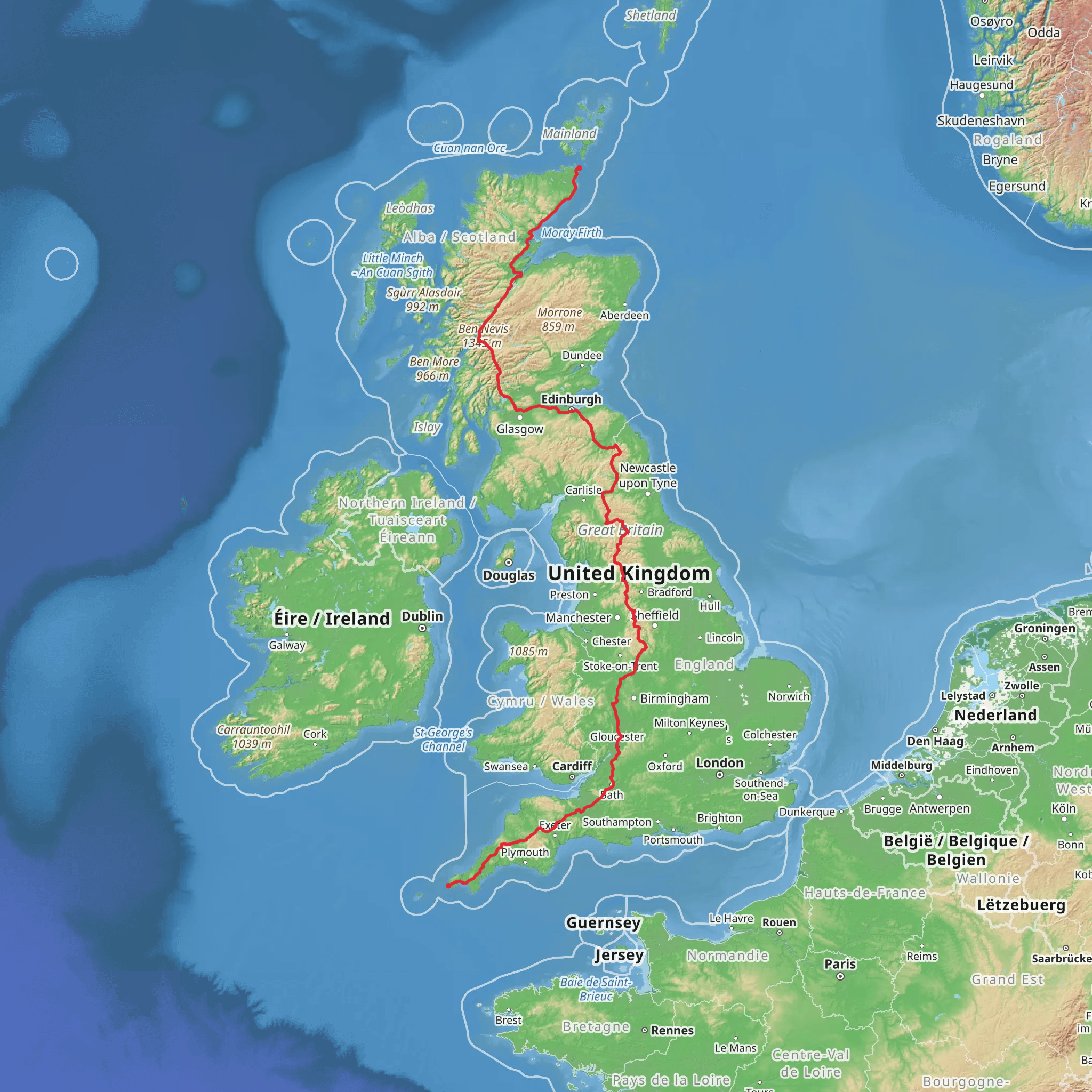Download
Preview
Add to list
More
1907.0 km
~98 days
18750 m
Multi-Day
“Embark on an epic British odyssey, traversing diverse landscapes and rich history from Land's End to John O'Groats.”
Spanning the length of Great Britain, the Land's End to John O'Groats trail is an epic journey that takes you from the southwestern tip of England to the northeastern tip of Scotland. Covering approximately 1907 kilometers (1185 miles) with an elevation gain of around 18700 meters (61350 feet), this trail is a challenging yet rewarding adventure for any long-distance hiker.
Getting to the Trailhead
The starting point of the trail is near Land's End in Cornwall, England. To reach the trailhead, you can drive to the Land's End Visitor Center, which is well-signposted and accessible from the A30. For those using public transport, the nearest train stations are Penzance and St Ives, from which you can take a bus or taxi to Land's End.
The Journey Through England
As you embark on your journey, the trail takes you through the rugged landscapes of Cornwall, with its dramatic cliffs and coastal views. You'll pass through picturesque villages and towns, such as St Ives and Tintagel, with its legendary connections to King Arthur. The trail continues through the rolling hills of Dartmoor and Exmoor, where wild ponies roam freely.
Crossing into Somerset and the Mendip Hills, you'll encounter the historical city of Bath, known for its Roman-built baths. The Cotswolds will offer a quintessentially English experience with its charming stone cottages and green countryside.
The Midlands and Into Scotland
As you progress northward, the Peak District presents a mix of moorland and limestone dales, while the Yorkshire Dales and North York Moors showcase England's rugged beauty. The trail then leads you through the Lake District National Park, a UNESCO World Heritage Site, with its stunning lakes and peaks.
Upon reaching Scotland, the Southern Uplands greet you with rolling hills and valleys. The trail takes you through the heart of Scotland, passing historic cities like Edinburgh and Glasgow, before reaching the Highlands. Here, the terrain becomes more challenging, with remote paths and higher elevations.
The Scottish Highlands and the Journey's End
The Scottish Highlands are a highlight for many, with their breathtaking landscapes and iconic features such as Ben Nevis, Britain's highest peak. The trail winds through the Great Glen, alongside the famous Loch Ness, where you might pause to search for its mythical monster.
Finally, the trail culminates at John O'Groats, a small village in the northeastern tip of Scotland. The end point is marked by the famous signpost, a popular spot for celebratory photos to commemorate the completion of this monumental trek.
Flora, Fauna, and Landmarks
Throughout the journey, hikers will encounter diverse wildlife, including red deer, otters, and a variety of bird species. The trail also offers the chance to see rare flora, such as the Cornish heath and Scottish thistle, thriving in their natural habitats.
Historical landmarks are abundant along the route, from ancient stone circles and castles to battlefields and historic homes. Each region has its own story to tell, contributing to the rich tapestry of the United Kingdom's heritage.
Navigation and Planning
Given the length and complexity of the trail, thorough planning is essential. Hikers should utilize navigation tools like HiiKER to access detailed maps and waypoints, ensuring they stay on the correct path. It's also advisable to plan for accommodation in advance, whether camping or staying in guesthouses and B&Bs along the route.
Weather and Gear
The weather in the UK can be unpredictable, so hikers should be prepared for all conditions, from rain and wind to occasional sunshine. Waterproof gear, sturdy hiking boots, and layers for warmth are essential. Given the remote sections of the trail, carrying a reliable means of communication and a first aid kit is also recommended.
Conclusion
The Land's End to John O'Groats trail is a journey of a lifetime, offering an immersive experience into the heart and soul of Britain. With its varied landscapes, rich history, and the sense of accomplishment that comes with completing such a trek, it's a must-do for serious hikers seeking a truly epic adventure.
Comments and Reviews
User comments, reviews and discussions about the Land's End To John O'Groats, England.
4.0
average rating out of 5
5 rating(s)

